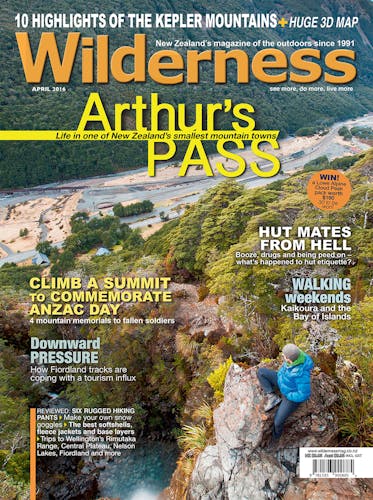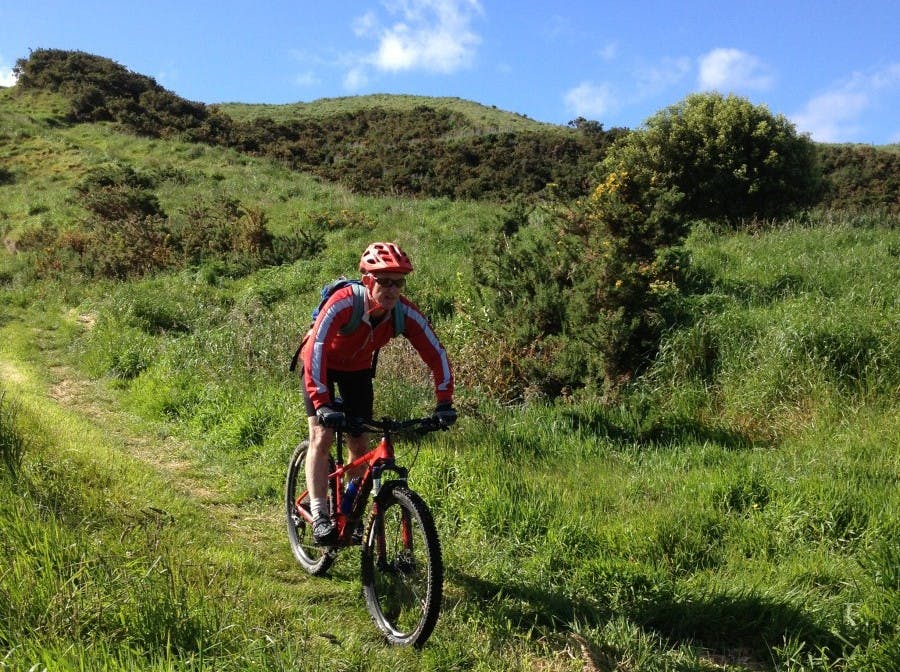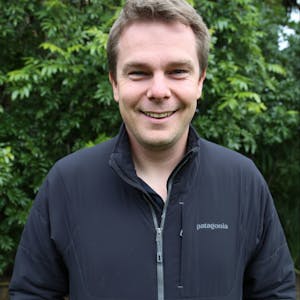Retiring CEO Mark Neeson has led the Walking Access Commission from its birth to a group helping to open rivers, beaches and backcountry to thousands of Kiwis. Matthew Pike catches up with him
If patience is a virtue, then Mark Neeson and his team at the Walking Access Commission (WAC) must be virtuosos.
To become involved in something as potentially tedious as negotiating land access requires staying power of geological proportions. Nothing happens overnight. Like waves wearing down a cliff, the commission slowly permeates an important message into the culture of relevant authorities: that access to the outdoors is part of our heritage – part of who Kiwis are.
The required patience can be the most difficult part, explains Mark Neeson, who retired at the end of February from his role as the commission’s first chief executive.
“The biggest frustration is the time it takes to achieve results,” says the 65-year-old. “We find there’s a 2-3 year time lag, so cases we started working on three years ago are now making their way to the end of the process. Successes aren’t always apparent and someone else will enjoy the fruits of the work we’re doing now.”
This delay can be blamed in part on the legal process, but there’s also the matter of trying to convince local councils and DOC that access issues should be high on their agenda. “Local government and DOC are two of the biggest access providers in the country,” explains Neeson. “We want them to be aware that in New Zealand we do have an access heritage and to understand their role in providing and protecting this.”
It’s not an argument that has always been well received, despite what Neeson describes as a growing awareness among local government. “Whether they like it or not is a different thing.”
If there’s a legal right of way through a property where the landowner’s refusing access, then the WAC can explain the legalities to the landowner and the local council, but that doesn’t guarantee results.
“We don’t have responsibility over that land or road and in the end it’s the district council which has the authority to do something about it.
“There’s still inertia in some organisations and a lot of factors come into play. Local politics can play a role, and so can the cost – if ratepayers need to pay for something to be done, the council might think it’s not in their interest or their ratepayers’ interest to do something.”
Convincing landowners to provide access out of the goodness of their heart can also be a long game. “We’ve been very clear to recognise property rights, so we don’t push or demand access if it’s private land and the landowner’s not interested.” However, sowing the seed of an idea can have an affect long term, says Neeson, and landowners will sometimes contact the commission years later to say they’d like to grant access or they’d thought of an alternative plan.
There are also plenty of landowners with an altruistic approach to their land and the community, explains Neeson. “Last year, for instance, a farming couple donated 400-500 ha of farmland to the community in Kaipara for a park. Sometimes land is covenanted, sometimes it’s gifted.”
Despite the slow, grinding nature of the commission’s work, results are happening around the country. Since its inception in 2008 it has helped solve more than 180 disputes, it has helped formalise or create more than 80 new access routes, and it has given $761,721 to 73 projects through the Enhanced Access Fund.
One of the access issues Neeson is proudest of is helping to extend public access to Molesworth Station, in Marlborough. “We put a lot of effort into submissions and looking at the legal status of the Acheron Road. We and other organisations and individuals persuaded the Molesworth Management Committee to increase the amount of time Molesworth Station is open to the public.”
Access without a permit is now allowed from late October to mid-April,whereas before it was from December 28 to April 1. “There’s definitely more to be done – access can still be increased – but that was a good outcome.”
Setting up a Walking Access Commission was part of the Labour Party’s 1999 manifesto and the Walking Access Act was passed in 2008 – the year the commission was born. Prior to that there had been no organisation responsible for pursuing public access. “DOC was focussed on managing its own land, rather than protecting public access and access over private land,” says Neeson. “We’re now the go-to organisation for public access.”
It’s hard to ignore the impact of the WAC’s online mapping system. For the first time, the New Zealand public has free-to-access mapping of the entire country detailing all land that is either publicly owned or has a public right of way.
The website has received more than half a million visits since its launch in 2010.
Neeson is especially pleased that the commission has stuck to its goals since he’s been in charge and has slowly acquired the credibility it needs to thrive in the future. “The objective wasn’t to be the bright shining new kid on the block,” he explains. “Credibility is very important to us. Our objective was to work with communities, individuals and landowners on a bottom up basis. We’re not a Wellington organisation that’s going to force solutions. What we’re trying to achieve is community support for what we’re doing. We’ve built a good foundation for the next 5-10 years.”








